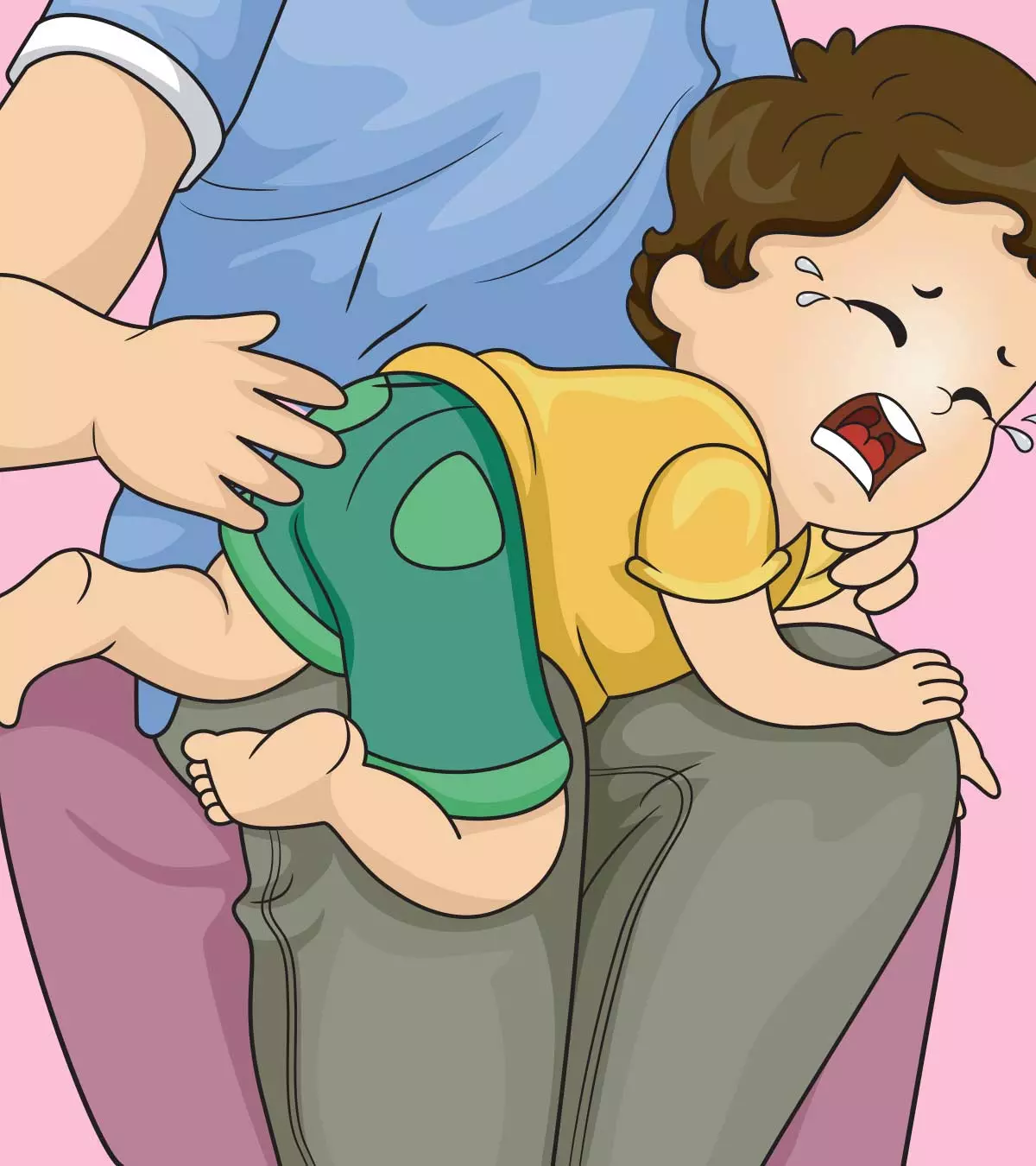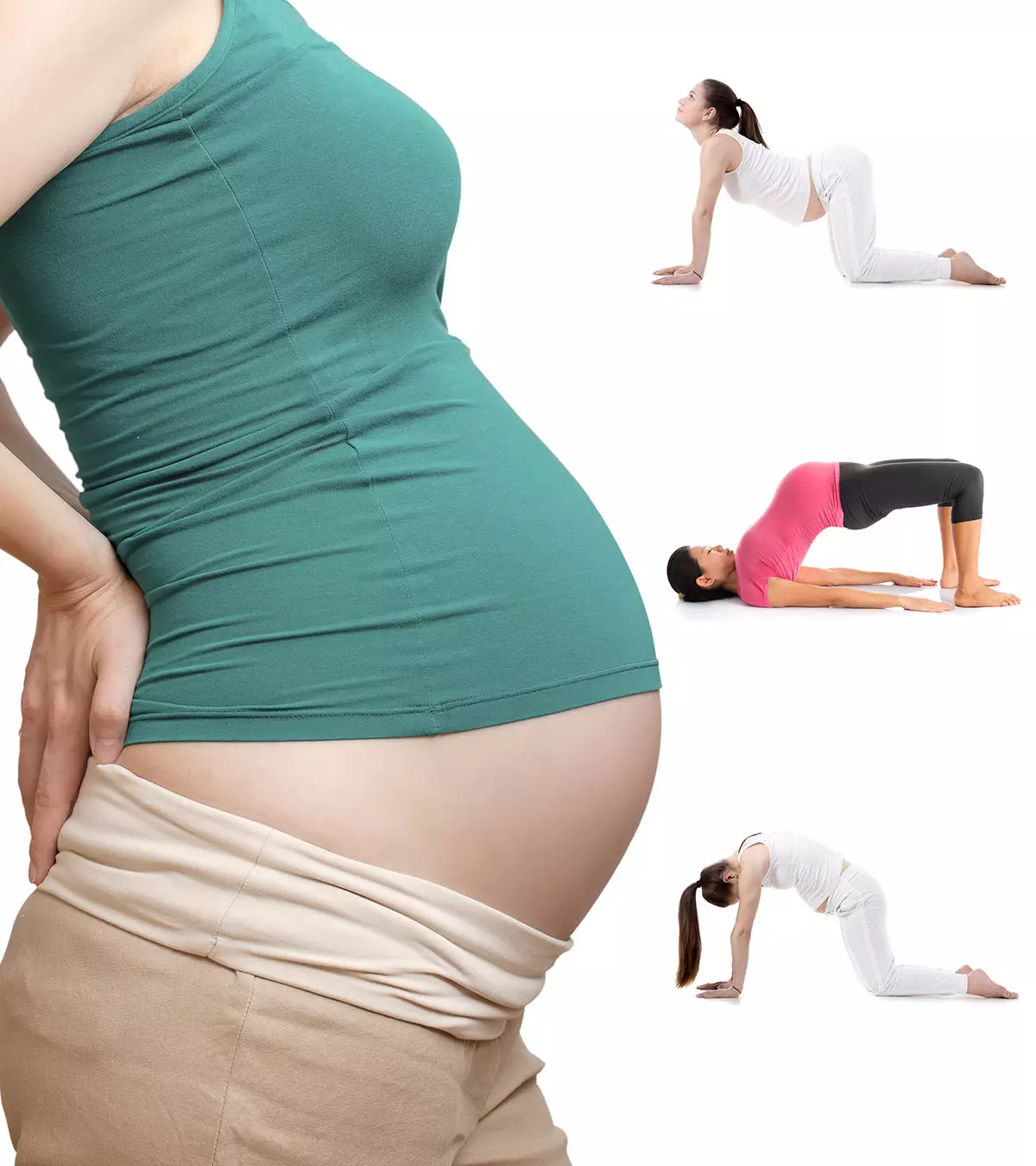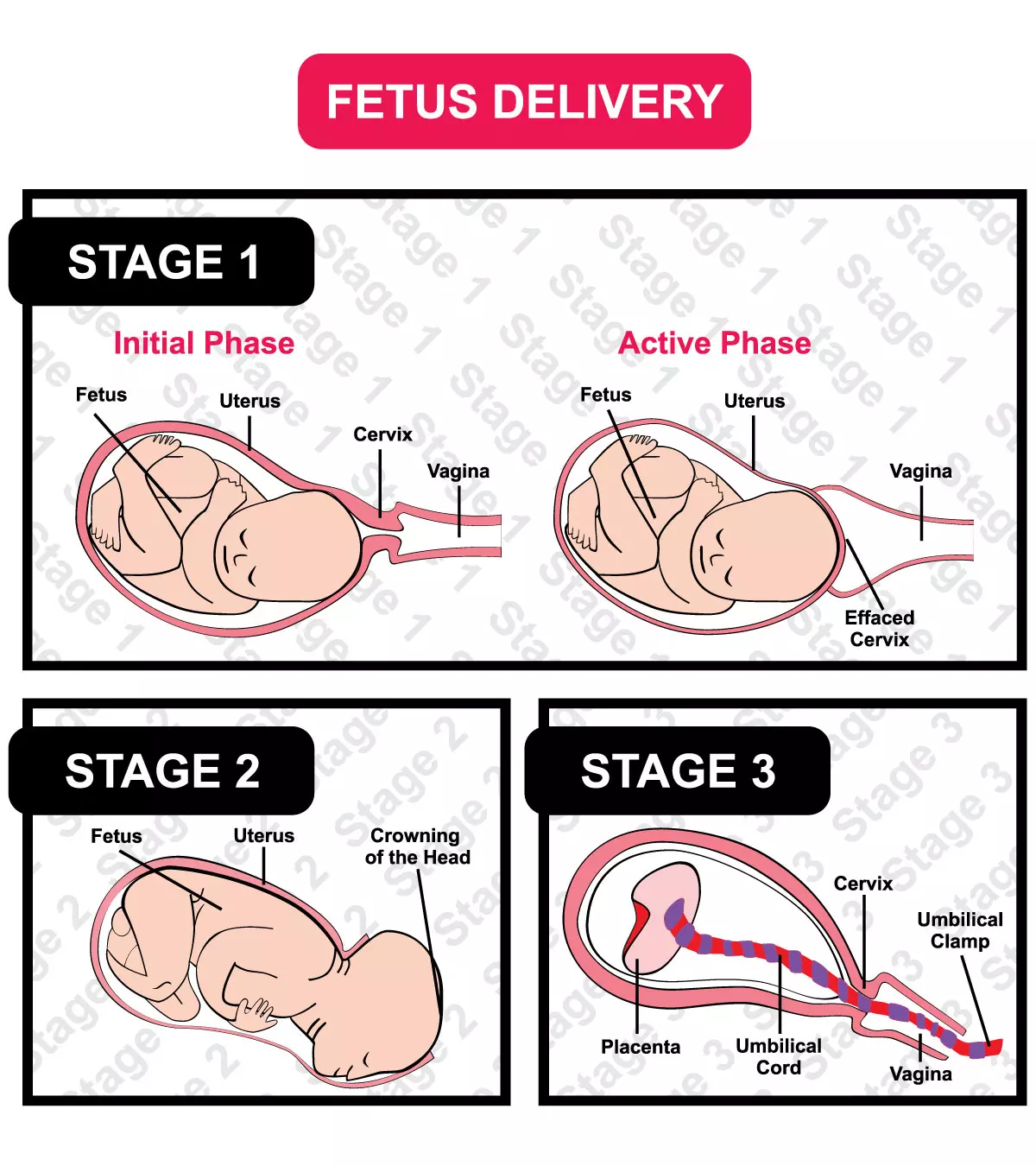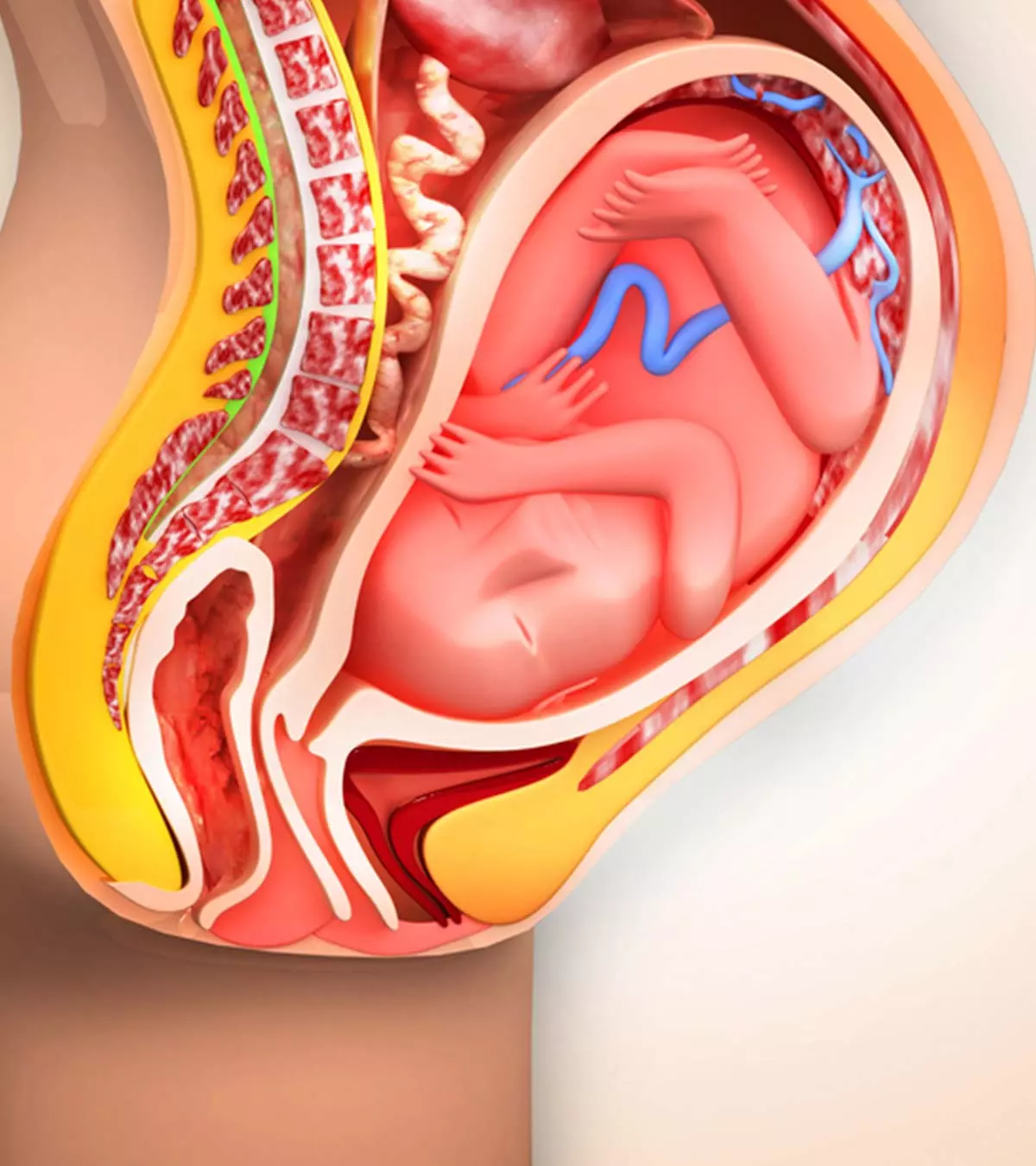
Image: ShutterStock
Are you pregnant and wondering how to stop pregnancy after one month? This post will give you more information in this context. The chances of successfully stopping a pregnancy primarily depend on your overall health and well-being and also on the progression of your pregnancy. Make sure you talk to your doctor before going through the procedure and also that there will be fewer chances of complications if you try to get pregnant in the future. Read on to know about the methods that might be used to stop pregnancy and the possible risks that it entails.

Key Pointers
- The stage of pregnancy and the overall health of the woman affect the success rate of terminating a pregnancy.
- Medical abortion using tablets is recommended for pregnancies within the first nine weeks.
- Saline water method involves removing a small amount of amniotic fluid and injecting a saline solution into the amniotic sac for abortion.
- Dilation and Evacuation (D&E) and Manual Vacuum Aspiration (MVA) are surgical methods used for terminating a pregnancy based on its stage.
- Some herbal medicines like pineapple, cinnamon, and papaya are believed to have abortion-inducing properties but carry a high risk of adverse effects.
How To Stop Pregnancy Without Surgical Abortion?
Some options that the health practitioner might suggest before considering surgical interventions include:
1. Medical abortion

This method uses pills and is usually recommended within nine weeks of pregnancy. In some cases, it may also be considered beyond nine weeks. According to the CDC Morbidity and Mortality Weekly Report (MMWR), early medical abortions accounted for 51.0% of all abortions in 2025. You do not have to get admitted to a hospital as pills can be safely used in the privacy of your home (1). However, you may have to visit the doctor throughout the course of the treatment.
The doctor is likely to put you on a course of two tablets, mifepristone or RU-486 and misoprostol:
- First, mifepristone, a kind of progesteroneiAn endogenous steroid that aids menstruation by decreasing the amount of estrogen in the uterus antagonist is given to block the progesterone hormone and for thinning the uterine wall lining.
- Misoprostol is given 48 hours after that to induce uterine muscle contractions. This leads to bleeding and cramping. The embryo and uterine remains may leave the uterus in the next few days. And the bleeding might continue for seven to ten days.
- An ultrasound is done after two weeks to ensure that everything is cleared, and there are no tissue remains. If there are any retained tissues, they may be removed surgically.
This two-drug combination pill, also called the abortion pill, was introduced in 2000 and even now is the most used method of abortion, as per a study. The graph below depicts the trend observed in the usage of medication abortion over 20 years. The data suggests a prevalent acceptance of medication-based abortion among patients and medical service providers.

Percentage of medication abortions in the US (2000-2025)
Source: Medication Abortion Now Accounts for More Than Half of All US Abortions; Guttmacher Institute2. Saline water method
In this method, a small quantity of amniotic fluid is taken out, and the saline solution is administered into the amniotic sac directly using a needle. The salt solution burns the fetus, and the body undergoes labor around this time to expel the fetus (2). In some cases, labor does not occur, and prostaglandins are injected to induce uterine contractions during pregnancy.
If these methods do not work, you may have to choose the surgical options.
 Health fact
Health factHow To Stop Pregnancy With Surgical Abortion?
The surgical abortion that the doctor recommends will depend on the pregnancy stage. The two common methods include manual vacuum aspiration (MVA) and dilation and evacuation (D&E) or Dilation and curettage (D&C). Both these procedures are conducted in hospitals and abortion clinics and involve the administration of local anesthesiaiTo induce the absence of sensation in a specific part of the body. .
1. MVA
This is performed during the initial 12 weeks of pregnancy. Local anesthesia is used to numb the cervical region. Then the cervix is opened using a tenaculumiA forceps-like surgical instrument and is held in a dilated position. A thin cannulaiA tube inserted into the body for the delivery or removal of fluid or to gather samples Spinal anesthesia or general anesthesia: Medically induced loss of consciousness through a mask or an IV placed in the vein , attached to suction, is passed into your uterus through the cervical canal to remove the fetus and uterine tissues. The procedure takes 10 to 15 minutes, and you may have to stay in the hospital for a few hours for optimum recovery. It is a relatively safe and gentle procedure with fewer complications (3).
2. D&E
This is performed in or after the 13th week of pregnancy and is usually the last option when the other methods to terminate the pregnancy after one month fail or are not viable.
A few hours before the actual procedure, a dilator is inserted into the cervix to help dilate it. The practitioner gives spinal anesthesia or general anesthesia to numb the cervical area. A tenaculum is then passed to open the cervix and uterus.
The cervical canal is dilated with probes of increasing size. Then a cannula, which is attached to a pump, is passed into the uterus. The pump provides a gentle vacuum to remove fetal and uterine tissues. Later, a curetteiA surgical instrument used for scraping biological tissue or debris is used to scrape the uterine lining and tissue residue. The procedure takes 15 to 30 minutes, and you may have to stay in the hospital for a few hours for optimum recovery.
The surgical option is an invasive method, and you may experience dizziness, cramps, nausea, and sweating during the procedure. Some may also have heavy bleeding, cervical damage, blood clots, and perforation in the uterus. Also, there is a chance of infection, and you may develop a fever and abdominal tenderness, for which you should see a doctor (4).
 Quick fact
Quick factNatural Remedies That Could Stop Pregnancy
Some natural herbs and natural ingredients are believed to have the efficacy to stop pregnancy, but they might come with a high risk. Use of these herbs could lead to heavy bleeding (due to missed or incomplete abortion), toxicity, and infections. Healthcare practitioners may not recommend them, and their use is mostly based on anecdotal evidence.
- Papaya: Papaya has phytochemicalsiChemical compounds produced by plants to fight bacteria, fungi, and other infections that are abortifacientiA drug that causes abortion inhibit progesterone hormone activity. It also contains prostaglandins and oxytociniA hormone produced in the hypothalamus responsible for social bonding and reproduction that can stimulate contractions (5).

- Pineapple: Pineapple contains a proteolytic enzymeiEnzymes made by animals, plants, fungi, and bacteria that break down protein known as bromelainiA type of enzyme found in the stem, fruit, and juice of pineapples that can soften the cervix. It is believed that the ingestion of the flesh of young fruit might lead to natural abortion (6).
- Cinnamon: Cinnamon, when brewed with water to make tea, may induce early labor, and usually falls in the list of herbs to avoid during pregnancy (7).
- Sesame seeds: They are either blended with palm jaggery or taken with honey. It is believed that a particular dose of sesame seeds during pregnancy might increase body heat and therefore stimulate contractions.
- Chamomile/green tea: Another age-old belief is that high consumption of green tea or chamomile tea may induce uterine contractions (7).

- Heavy exercises: Some also believe that exercises such as crunches and sit-ups could cause abortion. But there are no scientific studies to substantiate this widespread belief.
- Frequent intercourse: This can harm fetal development if done in the early weeks. The orgasms will lead to uterine contractions, causing an abortion. Also, the prostaglandins present in the semen are known to stop fetal growth. However, just like the other natural methods, this is not a recommended method to stop pregnancy.
Although these have been tried, it is recommended not to try them for your safety.
Possible Complications Of Abortion
Abortions are safe only when the health care provider performs/ advises the necessary steps to complete the entire process. Otherwise, there could be complications such as (8):
- Infection of the womb
- Remains of fetal tissues in the womb
- Failure of termination
- Excessive bleeding that may require a blood transfusion
- Cervical damage
- Damage to the womb
- Mental health risks in some cases

It is essential to take rest, include enough nutrition, and get the right treatment to return to normalcy in life. Your doctor is likely to offer you the required treatment and advice for your recovery.
 Point to consider
Point to considerHow To Speed Up Recovery After The Abortion?
Though you can get back to a normal routine within a few hours of abortion, it is advisable to rest for two to three days for your body and mind to cope with exhaustion (9) (10).
- Do not lift heavy objects that weigh over 50 pounds. They may aggravate bleeding and lead to complications.
- Do not indulge in exercise, including biking, running, and aerobics, to avoid risks.
- Monitor your body temperature every day at least for a week as high temperatures might indicate an infection.
- Avoid intercourse as the cervix is still tender and will not close quickly. Avoiding sex also decreases the risk of infections. Talk to your doctor to know what the best time to return to sexual activity is.
- Use a hot compress, such as a hot water bottle or a heating pad on your belly, to get relief from cramping and pain.

- Avoid swimming and tub bathing for at least two weeks. Otherwise, it may cause irritation and infection in the vaginal area.
- Do not use anything, such as tampons or contraceptive implants, inside the vagina for at least two weeks.
- Include a rich diet of fruits, vegetables, healthy fats, protein, whole grains, and drink a lot of water.
It is advisable to see a doctor within a month after abortion to check if the healing is complete.
Frequently Asked Questions
1. Can hot water cause miscarriage?
Yes, according to one study, early pregnancy exposure to a hot tub or Jacuzzi is linked to an increased risk of miscarriage (11).
2. Can too much salt cause miscarriage?
Although there is no conclusive evidence, it has been hypothesized that excessive salt consumption during conception or early pregnancy can cause inflammatory responses, which are linked to higher risks of miscarriage, preeclampsia, or adverse pregnancy outcome (12).
3. What are the success rates for stopping a pregnancy after one month?
The most common way to stop a pregnancy after a month is by taking an abortion pill. At 8 weeks pregnant or less, the success rate of this method is 94-98%. The success rate decreases to 94-96% after 8 weeks (16).
4. Who should not go for medical abortion?
Dr. Michael Green, a board-certified obstetrician-gynecologist from Lake Arrowhead, California, opines, “Medical abortions are generally not recommended for mothers past their first ten weeks of pregnancy, though other options remain available. Also, in the case of an ectopic pregnancy, medical abortions are not generally safe, and other measures are needed to remove the growth.”
This article discusses everything you need to know about how to stop pregnancy after one month. However, think it through before terminating the pregnancy since it can be physically and emotionally difficult. Further, carrying out the abortion without the help of medical professionals can lead to complications such as womb infection, excessive bleeding, and mental health issues. However, you can opt for medical abortion and avoid surgical interventions if you are within the ninth week of pregnancy. Also, consult a doctor one month after the abortion to know if the healing is complete.
Infographic: What Happens In Pre-Abortion Counselling?
Pre-abortion counseling has an essential role in a woman’s informed decision-making. Making a knowledgeable decision can help avoid future regrets, and most importantly, counselors also encourage women to seek post-abortion medical care. Go through the infographic to learn the benefits of counseling in abortion care. Illustration: Momjunction Design Team
Illustration: How To Avoid Pregnancy After One Month?

Image: Stable Diffusion/MomJunction Design Team
References
1. Ending pregnancy with medicines; NIH (2019)
2. Christina Raup; Abortion; The Embryo Project Encyclopedia (2010)
3. Manual Vacuum Aspiration; University of Miami Health System
4. Dilation and Curettage (D & C); Cleveland Clinic
5. Gopalakrishnan M and Rajasekharasetty MR; Effect of papaya (Carica papaya linn) on pregnancy and estrous cycle in albino rats of Wistar strain; Indian J Physiol Pharmacol (1978)
6. Pineapple; Purdue University (2019)
7. Herbs to Avoid During Pregnancy; The University of Texas at El Paso
8.Risks – Abortion; National Health Service (NHS) (2016)
9. FAQ: Post-Abortion Care and Recovery; UCLA Health
10. Recovering from your Manual Vacuum Aspiration (MVA) or Dilation and Evacuation (D&E); Michigan Medicine; Department of Obstetrics and Gynecology (2019)
11. De-Kun Li, et al.; Hot Tub Use during Pregnancy and the Risk of Miscarriage; American Journal of Epidemiology (2003).
12. Amir Abdoli; Salt and miscarriage: Is there a link?; Medical Hypotheses
(2016)
13. Can having an abortion affect my fertility?; National Health Service (NHS)
14. What facts about abortion do I need to know?; Planned Parenthood
15. Contraception after an abortion; Better Health Channel
16. The abortion pill; PlannedParenthood.org
Community Experiences
Join the conversation and become a part of our nurturing community! Share your stories, experiences, and insights to connect with fellow parents.
Read full bio of Dr. Shivani Chaturvedi
- Dr. Michael Green is a board-certified OB/GYN living in Lake Arrowhead, CA. He studied medicine at St. Louis University of Medicine and completed a Family Medicine Residency at the Ventura County Medical Center. Dr. Green did a second residency in Obstetrics and Gynecology at The Carolinas Medical Center in Charlotte, NC. In addition, he holds a masters degree in Chemistry from the California State University Northridge. With over 17 years experience, Dr. Green currently works as a site director for OBHG at Northridge Medical Center in Northridge, CA.
 Dr. Michael Green is a board-certified OB/GYN living in Lake Arrowhead, CA. He studied medicine at St. Louis University of Medicine and completed a Family Medicine Residency at the Ventura County Medical Center. Dr. Green did a second residency in Obstetrics and Gynecology at The Carolinas Medical Center in Charlotte, NC. In addition, he holds a masters degree in Chemistry from the California State University Northridge. With over 17 years experience, Dr. Green currently works as a site director for OBHG at Northridge Medical Center in Northridge, CA.
Dr. Michael Green is a board-certified OB/GYN living in Lake Arrowhead, CA. He studied medicine at St. Louis University of Medicine and completed a Family Medicine Residency at the Ventura County Medical Center. Dr. Green did a second residency in Obstetrics and Gynecology at The Carolinas Medical Center in Charlotte, NC. In addition, he holds a masters degree in Chemistry from the California State University Northridge. With over 17 years experience, Dr. Green currently works as a site director for OBHG at Northridge Medical Center in Northridge, CA.
Read full bio of Rebecca Malachi
Read full bio of Swati Patwal
Read full bio of Aneesha Amonz
















